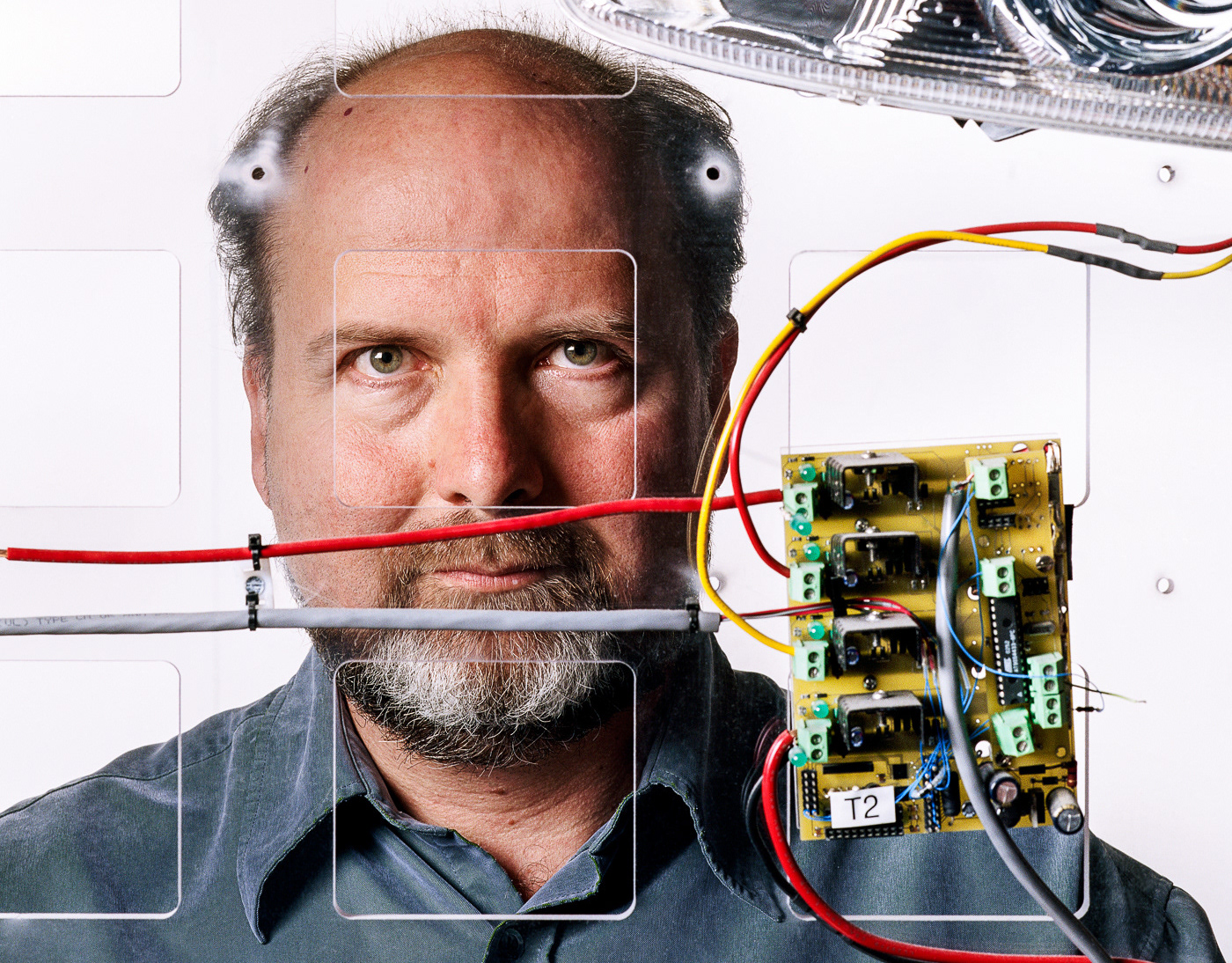Discover Magazine article on JOANNE WEIDHAAS - http://discovermagazine.com/2014/dec/16-true-believer
The Little-Known Genetic Mutation Behind Many Aggressive Cancers
Despite the dangers of the KRAS-variant mutation, few doctors have heard of it. But one researcher is trying to change that.
By Linda Marsa
Oct 9, 2014 7:00 PM
Memorial Sloan Kettering Cancer Center, housed in magisterial granite and glass high-rises near New York City’s East River, is the court of last resort for the desperate and the dying. They often arrive in ambulances, accompanied by a filing cabinet full of medical records that recount in dispassionate detail years of ultimately futile therapies.
In the early 2000s, when Joanne Weidhaas was a radiation oncology resident at the renowned facility, one of her mentors made a chance remark that would shape the course of her career.
“Pay attention and notice this: You’ll see that cancer is not evenly spread,” he told her. “There will be people that get not just one, but two and even three different types of cancers.”
Weidhaas noticed. She saw the people hit again and again — in their lungs, then the colon or the pancreas. These patients haunted Weidhaas. “After their initial diagnosis, in the back of your mind you’re always filled with this sickening dread because you’re wondering if they’ll have to go through this all over again,” she says. She also saw how unpredictably the disease struck. “Everyone thinks of cancer patients as old, sickly, 10-pack-a-day smokers, but many are super healthy. Cancer blindsides you — one day you’re healthy, and the next day you’re not.”
Her experience at Sloan Kettering, and with other cancer patients, motivated her to discover why some people without obvious risk factors still get the disease. In 2008, she and collaborator Frank Slack, a cancer biologist who is now at Harvard, found a unique genetic signature in people who suffer from these multiple tumors. This biomarker, called the KRAS-variant, is linked to more cancers than any other known inherited genetic mutation. It is present in 1 out of every 4 people with cancer, and in more than half of people who develop multiple cancers. KRAS-variant carriers tend to get highly aggressive and recurrent breast, ovarian, head and neck, lung and pancreatic cancers.
The KRAS-variant mutation is also relatively common in the population at large; about 1 person in 20 carries it. By comparison, the better-known breast cancer mutations, BRCA1 and 2, are found in 1 in 400. Yet despite the dangers of the KRAS-variant mutation, few doctors, let alone patients, have heard of it.
Not long after their 2008 finding, Weidhaas and Slack devised a simple diagnostic test that uses blood or saliva samples to detect the presence of the KRAS-variant. The test can help patients and their doctors to be more vigilant about screenings, potentially catching cancers at their earliest and more treatable stages, and to make more informed decisions about therapies that may improve survival and quality of life. But the 46-year-old radiation oncologist, described by one colleague as a “take no prisoners” kind of person, now finds that her biggest battle is outside the lab. She wants to make this diagnostic tool a standard practice, but it’s difficult — and expensive — to persuade doctors to change their approach or insurance companies to pay for tests that haven’t been thoroughly vetted. “To get a biomarker that predicts cancer risks into clinical practice, you have to do lengthy full-scale clinical trials to be absolutely confident,” says Frank McCormick, a prominent biochemist with the National Cancer Institute. “It can take up to 10 years.” The patients Weidhaas sees don’t have 10 years to wait.
Weidhaas grew up in a wealthy Detroit suburb in a family of high achievers. Her mother was a Wellesley-educated designer, her father a top executive at Ford Motor Co. Her uncle, Roy Vagelos, was chairman and CEO of Merck. Excellence was expected. She intended to become a biochemist, but during a volunteer stint at a hospital in New Haven, Conn., while she was an undergraduate at Yale, she discovered a profound desire to heal the sick. She broadened her field of study to medicine.
In medical school at Tufts University, she chose oncology as her specialty because she was impressed by the patients’ courage and fighting spirit. “But we fail these patients half the time,” she says. “We’ve got to do better, and I felt I could do something with the science.”
At Tufts, Weidhaas worked with John Coffin, a leading molecular biologist who saw her as extraordinarily gifted and focused. “I distinctly remember that she broke her leg, and she would park herself in a desk chair with wheels. She became a real terror rolling around the lab but keeping up with her work all the while,” he recalls.
Weidhaas asked to work with Coffin after hearing his lecture on how research into retroviruses, his field of expertise, had led to insights about a type of gene implicated in cancer: ras genes.
We all have ras genes, which make proteins that are vital to normal cellular function. Take the ras gene known as KRAS, for example: It produces a critical protein, also called KRAS, that regulates cell growth and appropriate cell aging, known as senescence.
Certain mutations of the ras genes, however, result in uncontrolled production of their specific proteins, disruption of the normal life and death cycle of cells, unchecked growth and, eventually, cancer.
Researchers did not understand what normally kept ras genes’ protein production in check — and why certain ras mutations led to such chaotic, uncontrolled cellular activity — until the discovery of a snippet of genetic material called microRNA (miRNA).
In 1993, while Weidhaas was at Tufts, the first miRNA was identified. These tiny pieces of RNA bind to target sites on protein-producing genes, including ras genes, and essentially fine-tune the amount of protein produced. Researchers began to suspect that certain mutations of a gene might make it difficult for microRNA to bind securely to its target and control protein production. Communication Breakdown
In 2000, South African-born Slack and co-author Gary Ruvkin identified the miRNA let-7, only the second miRNA ever discovered. In subsequent research, Slack found that let-7 controlled the amount of KRAS protein that the ras gene KRAS produced. Most of the time, let-7 effectively communicated to the gene exactly how much KRAS protein was needed for normal cell turnover. But sometimes things went wrong, cells multiplied out of control, and the result was cancer. To understand the complex relationship among the miRNA let-7, the KRAS gene and the KRAS protein, Slack decided to look at how they interacted in lung cancer.
He presented his idea one day to a roomful of about 30 colleagues at Yale’s “Worm Meeting,” the weekly gathering for researchers studying C. elegans, the lowly nematode widely used as a model organism in developmental biology. Weidhaas, who had recently joined the Yale faculty, knew Slack when they were both graduate students at Tufts. She reintroduced herself after the seminar, and their collaborative partnership was born.
Weidhaas and Slack began their hunt with a cache of lung cancer patients’ tumor samples that she found in a tissue bank in the basement of a Yale lab building. Lena Chin, a graduate student in Slack’s lab, sequenced the DNA from the tissue slices.
Chin noticed a glitch in communication between let-7 and the KRAS gene in about 20 percent of the tumors. In these cases, the team identified a mutation of the KRAS gene — they called it the KRAS-variant — that prevented let-7 from controlling how much KRAS protein was made. In KRAS-variant patients, let-7 simply could not connect to the KRAS gene well enough to stop it from producing too much protein. The excess protein led to unchecked cellular division and cancer.
Weidhaas and Chin spent months poring over medical records, cross-checking what they had learned from the genetic signatures of the tumors with the progress of each patient’s disease. What they found was startling — and chilling.
The 20 percent of lung cancer patients who carried the KRAS-variant had more aggressive cancers that affected multiple organs. “We’d go through their charts and see the same things over and over. They’d beat the lung cancer, but then they’d get head and neck cancer, or breast cancer or colon or pancreatic cancer,” says Weidhaas. “I remember thinking, ‘Holy cow — this is real.’ ”
When Weidhaas and Slack presented their initial findings at several major cancer conferences, they were treated like rock stars by their audience of fellow researchers. “We had people running up on the stage, asking to collaborate,” recalls Weidhaas.
They looked beyond lung cancer, and discovered the KRAS-variant played a key role in half a dozen other particularly lethal malignancies, especially in women.
Women with the variant were at much higher risk for cancer, had more recurrences, were often hit with multiple cancers and were more likely to die from aggressive forms of these diseases.
Recognizing their discovery’s significance and hoping to speed up the process of taking it from lab bench to bedside, Weidhaas and Slack founded the company MiraDx in 2008. Using about $3 million in seed money cobbled together from friends and family members, they planned to commercialize their diagnostic test. The goal was to make it standard practice, much like BRCA screening for women with a family history of breast and ovarian cancer.
By 2010, they had launched their first test, PreOvar, which uses either saliva or blood samples to evaluate ovarian cancer risks, including screening for the KRAS-variant. PreOvar was the forerunner of the current KRAS-variant test, which is also based on saliva or blood samples.
The new diagnostic tool is used in research, but is also available to individuals for considerably less than many other genetic tests. The KRAS-variant test must be ordered through MiraDx by the individual’s physician, who then collects the patient’s sample and sends it to the company’s certified lab for processing. Although some direct-to-consumer genetic testing has come under FDA scrutiny recently, the KRAS-variant test does not require the agency’s approval because it is given only in these controlled conditions.
Making the test widely available and keeping it affordable were Weidhaas and Slack’s goals from the start. Making the test standard practice was also their hope, but they quickly ran into the harsh realities of the marketplace: It can cost upward of $150 million to hire a sales force and do the years of clinical trials that both insurance companies and leading oncology groups demand before incorporating a diagnostic test into professional practice guidelines.
Without the time or money for this traditional route to get the test into standard practice, Weidhaas and Slack thought they would use the $3 million in seed money to promote the test in hopes of attracting more investors with deeper pockets. They hired a staff to run the company day to day, trying to drum up interest. It worked: Venture capitalists came calling three times between 2009 and 2011. But Weidhaas and Slack turned down all three offers. They were committed to keeping the fee low and felt the interested parties saw it only as a cash cow — other cancer genetic tests can cost $5,000 or more.
Thanks to the cost of research, test development and promotion — as well as a refusal to abandon their commitment to putting mission above profits — Weidhaas and Slack quickly burned through their funds. Women Especially at Risk
Yet even as their goal of wider KRAS-variant testing foundered, research supporting the need for such a test was piling up. Study after study — eventually involving more than 65,000 participants — confirmed the life-saving potential of this diagnostic tool.
Doctors have had little success diagnosing ovarian cancer at its earliest, most treatable states or identifying women at risk for the disease, for example. But Weidhaas and Slack’s studies showed how the KRAS-variant increases a woman’s risk of ovarian cancer — more than 27 percent of women with this type of cancer carried the variant. “More than 700,000 women get their tubes tied every year,” says Weidhaas. “If they had the variant, they might consider having their ovaries removed, too.”
Many women with a family history of breast and ovarian cancer know they can be tested for mutations in the BRCA1 and BRCA2 genes — known risk factors — and then consider preventive surgeries to reduce the probability of cancer. But Weidhaas’ research showed the KRAS-variant is present in 61 percent of women with hereditary breast and ovarian cancer who don’t have either BRCA mutation. Had these women been tested for the KRAS-variant well before their diagnosis, they, too, might have opted for potentially life-saving surgery.
“Patients [with a family history of cancer] are very anxious and do a lot of annual tests — ultrasounds, mammograms,” says Mary Polan, a former chair of the Department of Obstetrics and Gynecology at the Stanford University School of Medicine. “The KRAS-variant test can give them clinically important information.”
Women with the KRAS-variant are also more susceptible to triple-negative breast cancer, tumors whose growth is not fueled by the hormones estrogen and progesterone, or by the presence of a particular genetic mutation known as HER2, which promotes cancer cell growth. Triple-negative cancers, which affect up to 20 percent of breast cancer patients, are the most deadly and difficult to treat of all breast cancers. They don’t respond to therapies that target either hormone or the HER2 receptors. Triple-negative tumors are also more likely to spread and recur than other types of breast cancers.
Weidhaas’ most recent study, planned for release in December, suggests that hormone replacement therapy (HRT) itself is linked to triple-negative breast cancer in post-menopausal KRAS-variant women. Specifically, women with the KRAS-variant who had been on HRT and stopped taking hormones before their diagnosis were significantly more likely to develop the more lethal type of breast cancer. For KRAS-variant women, “estrogen withdrawal may be a really bad idea,” says Weidhaas.
Other research Weidhaas has conducted suggests that cancer patients with the KRAS-variant are often resistant to platinum-based chemotherapies. This class of chemotherapy is typically the first-line therapy, which means patients are being subjected to debilitating treatments that aren’t doing any good — and may even allow cancer to spread when other types of chemotherapy could have halted that progression. In It for the Long Haul
Few practicing oncologists know the KRAS-variant test exists. After much soul searching, a frustrated Weidhaas took a highly unusual step to jump-start its use in medical practice. With her uncle’s encouragement — “you’re the only one who can do this right now because of your passion, your credibility and your understanding of the science,” Vagelos told her — she took a leave of absence from Yale, uprooted her family and relocated them to Silicon Valley so she could attend business school at Stanford University and gain the know-how needed to fund and market the diagnostic test. She was particularly attracted to Stanford because of its focus on nonprofits.
Weidhaas joined the faculty at UCLA this summer, though she still lives in northern California with her lawyer husband, three kids and a menagerie of rescues, including cats, dogs, lizards, ferrets and a bunny. A laser-like focus enables her to juggle all the disparate parts of her life.
That focus also helps her remain undaunted. Through MiraDx and Weidhaas’ new nonprofit Mirakind, she continues to offer the test to physicians and to recruit new study participants. Both companies are funded personally by Weidhaas and by continued contributions from her initial investors. A modest amount of money also comes from donations and study participants. Although participants are not charged to be part of the research, Weidhaas does request they pay for the cost of the test ($295) if they want to learn their individual KRAS-variant status.
Weidhaas hopes to create a new paradigm for developing diagnostic markers, based on a direct-to-consumer approach where patients can get educated and pay for tests that contain valuable information.
“We could have cashed out at any point, but the goal is doing this the right way,” Weidhaas says. “My husband said maybe we should just fold up shop because we’re out of money, and maybe there will be something else. But I’m never going to find something that could help people like this. It’s such a gift that I’ve been given this opportunity, but it has been so hard to move it forward. You run into walls, and you adjust, and you weave, and you pivot. But I think we’ll get there — we have to get there because we could be helping people right now.”










